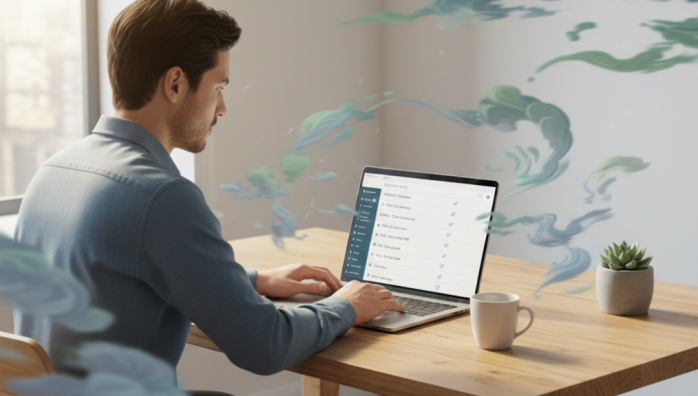How I use Todoist to manage my ADHD mind
by admin in Productivity & Tools 15 - Last Update November 21, 2025

For years, my brain felt like a web browser with a hundred tabs open at once, all playing different sounds. Traditional to-do lists didn\'t help; they just became another tab. They were long, intimidating scrolls of forgotten promises I made to myself. Honestly, I thought task management apps just weren\'t for people like me. The constant need to organize the organizer felt like a cruel joke. Every system I tried, from complex methodologies to simple notebooks, eventually collapsed under the weight of its own structure.
The ADHD brain vs. the standard to-do list
I eventually realized the problem wasn\'t me, it was the tool\'s rigidity. The ADHD brain often struggles with object permanence—if I don\'t see a task, it ceases to exist in my mind. We also grapple with executive dysfunction, making it incredibly difficult to prioritize or even start a task when faced with a massive list. It triggers instant overwhelm, leading to paralysis. A standard, static list is a recipe for this exact kind of shutdown. It lacks context, urgency, and the flexibility needed to adapt to a mind that jumps from one priority to another based on focus and energy levels.
Why I chose Todoist (and stuck with it)
After trying nearly a dozen other apps, I landed on Todoist and, for the first time, something clicked. The magic wasn\'t in some hidden, complex feature. It was the opposite. Its simplicity was its strength. The killer feature for me is the natural language input. I can type \"Schedule team meeting every other Tuesday at 10am #work\" and it just... works. This removed the single biggest point of friction: having to click through multiple menus to categorize a simple thought. It meant I could capture a task as fast as my brain generated it, which is a lifesaver for preventing ideas from vanishing into the ether.
My 3-pillar Todoist system for an ADHD mind
My system isn\'t about creating a perfectly organized, color-coded masterpiece. It\'s about creating a functional, low-friction safety net that works with my brain\'s tendencies, not against them. I focus on three core principles.
Pillar 1: The \'brain dump\' inbox
The Todoist Inbox is my most critical tool. I have a personal rule: if a task or idea pops into my head, it goes into the Inbox immediately. I don\'t worry about dates, projects, or labels at this stage. The goal is simply to get it out of my head to free up precious working memory. I treat it like a temporary holding pen. Later, maybe once a day, I\'ll spend just five minutes sorting these items, assigning dates and projects. This separation of \'capture\' and \'organize\' is fundamental for avoiding overwhelm.
Pillar 2: The magic of due dates and recurring tasks
I automate everything I possibly can. Remembering to pay a bill, water the plants, or follow up on an email is mental overhead I can\'t afford. I use Todoist\'s recurring dates feature relentlessly. \"Every first of the month,\" \"every Monday morning,\" \"every 3 days starting today.\" By outsourcing my memory for these routine tasks to the app, I can trust that they will appear when I need to see them, and only then. This dramatically reduces my background anxiety.
Pillar 3: Slay the overwhelm with filters and labels
This is where I build the custom dashboard my brain needs. A long list is paralyzing, but a short, context-specific list is empowering. I use simple labels like `@home`, `@work`, `@errands`. Then, I use Filters to create custom views. My most-used filter is called \"Focus Today\" and its rule is simply \"today | overdue\". This shows me only what is absolutely due today or past due. I don\'t see the tasks for tomorrow or next week. It turns a mountain of tasks into a manageable handful of steps, making it infinitely easier to get started.
A word of caution: avoiding the \'perfect system\' trap
I have to constantly remind myself that the goal is progress, not perfection. In the past, I\'ve wasted entire days trying to build the \'perfect\' productivity system, only to abandon it a week later because it was too complex to maintain. My advice is to start incredibly simple. Use the Inbox and due dates. That\'s it. Once that becomes a habit, maybe add a few labels. Then, try one or two filters. The system should serve you, not the other way around. If it feels like a chore, it\'s too complicated.











